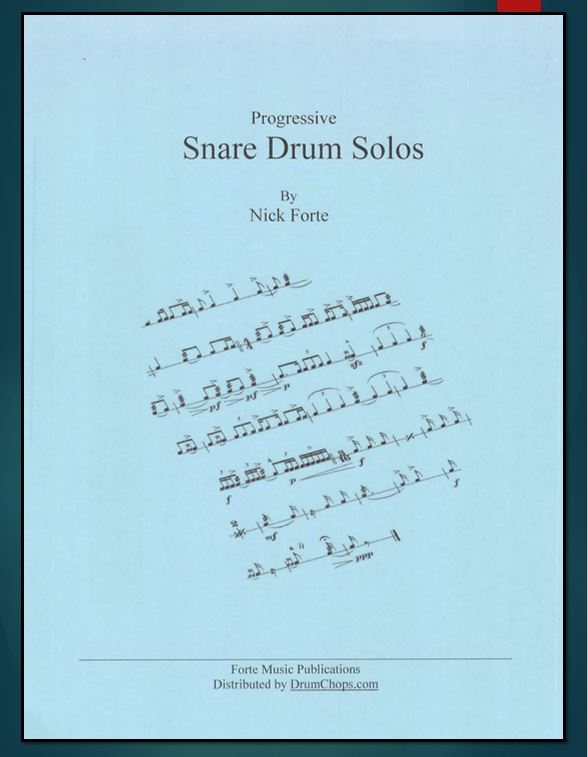
On-Line Catalog
Progressive Snare Drum Solos
The snare solos included in this collection are meant primarily for the “intermediate” student. They are representative of a variety of styles and techniques that are essential in the development of any aspiring drummer. Don’t let the sometimes-whimsical titles fool you; there is plenty of serious drum study between these covers. The solos range from drum corps (marching band) to concert (band) to symphonic (orchestra) to jazz and Latin. The important difference between this and similar snare drum books is that each of these solos was written with a specific concept or skill/requirement in mind – the line between a practice etude and performance piece is often blurred. For example, a solo may highlight such items as:
- Dynamics
- Time signatures Note duration
- Jazz/Swing interpretation
- Rudimental articulations
- Note abbreviations
- Rhythmic modulations
- Various orchestral markings
- Artificial (irrational) groupings
- Over-the-bar rhythms/permutations
Consequently, the student must be (or become) familiar with these and other items in order to complete the solo(s) as written. In any event, some students may be able to “sight read” a particular solo; other students may need additional practice/study time to perform the same solo.
Many of the solos include specific information and suggestions about how certain notes/groupings in the solo are played – look for this help in the “Performance Notes” sections at the end of those solos. Even though, general metronome marks are included, it is recommended that the student experiment with expanding the range of tempos – both slower and faster. A few of the solos take their inspiration from famous composers; e.g., Stravinsky, Ives. Other solos find their origins in swing/jazz and tap dance rhythms.
The last six solos (pages 74-85) feature a more esoteric approach to snare drum playing. These solos utilize rhythms that are performed on certain sections of the drum head and/or rim; or, with a stick in one hand and a wire brush in the other hand; or, even clicking the sticks together. The idea here is to widen the sonic possibilities of the snare drum and incorporate different drumming techniques. Alertness, dexterity and conceptual awareness are key goals.

